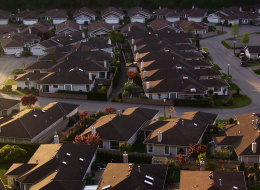
Until the mid-twentieth century the suburban environment did not exist. It's new, it's bad, and it's going away? Designed for an elite access to "safer" neighborhoods outside the condensed city, it was seen as an advantageous alternative to crowded inner city life. But, maybe,....it was actually a fail.
Before the emergence of the planned suburban community, towns and cities developed from the natural growth of business and industry. Mixed-used spaces required inhabitants to live, work, and shop/consume in the same space; keeping the economy rich, neighborhoods safe, and maintaining pedestrian access to the entire community. With suburbia, however, single-use pods are attached by a main road-way and smaller feeder streets (if you've read "Suburban Nation: the Rise of Sprawl and the Decline of the American Dream," these single-use pods include residential, shopping, business, municipal, and roadway pods http://tiny.cc/jnw42), isolating business, people, and economic classes. Though not true of all suburban developments, the basic formula for Levitt Town (our classic, suburbia)revolves around this separation of "use". For those of us that grew up in the midst of suburban sprawl, you definitely understand that close, intimate, and loving bond shared with your car. 15 years old, learner's permit. 16 years old, freedom (at least for the state of CA). Here, a car is your only means of access, communication, and economic competition.
But the dog days of suburban supremacy are ending? As revealed in a recent Washington Post article, a new demographic distribution may be developing. In an analysis of 2000-2008 census data by the Brookings Institution, Brookings found that "America's suburbs are now more likely to be home to minorities, the poor and a rapidly growing older population as many younger, educated whites move to cities for jobs shorter commutes." Please see the article for more information: http://www.huffingtonpost.com/2010/05/09/suburbs-losing-young-whit_n_569226.html
